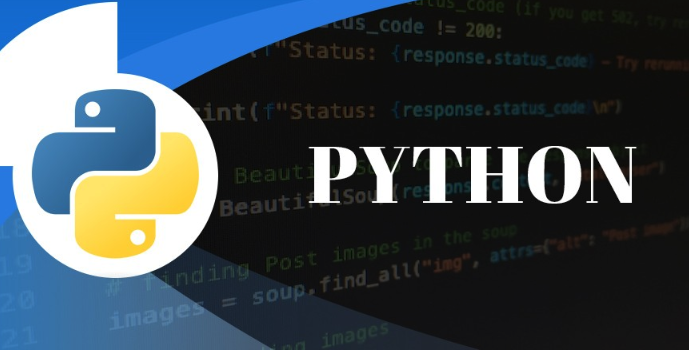收藏这份 Python 字符串综述,不容错过!
在IT行业这个发展更新速度很快的行业,只有不停止的学习,才不会被行业所淘汰。如果你是文章学习者,那么本文《收藏这份 Python 字符串综述,不容错过!》就很适合你!本篇内容主要包括##content_title##,希望对大家的知识积累有所帮助,助力实战开发!

什么是 Python 字符串
字符串是包含一系列字符的对象。字符是长度为 1 的字符串。在 Python 中,单个字符也是字符串。但是比较有意思的是,Python 编程语言中是没有字符数据类型的,不过在 C、Kotlin 和 Java 等其他编程语言中是存在字符数据类型的
我们可以使用单引号、双引号、三引号或 str() 函数来声明 Python 字符串。下面的代码片段展示了如何在 Python 中声明一个字符串:
# A single quote string single_quote = 'a'# This is an example of a character in other programming languages. It is a string in Python # Another single quote string another_single_quote = 'Programming teaches you patience.' # A double quote string double_quote = "aa" # Another double-quote string another_double_quote = "It is impossible until it is done!" # A triple quote string triple_quote = '''aaa''' # Also a triple quote string another_triple_quote = """Welcome to the Python programming language. Ready, 1, 2, 3, Go!""" # Using the str() function string_function = str(123.45)# str() converts float data type to string data type # Another str() function another_string_function = str(True)# str() converts a boolean data type to string data type # An empty string empty_string = '' # Also an empty string second_empty_string = "" # We are not done yet third_empty_string = """"""# This is also an empty string: ''''''
在 Python 中获取字符串的另一种方法是使用 input() 函数。input() 函数允许我们使用键盘将输入的值插入到程序中。插入的值被读取为字符串,但我们可以将它们转换为其他数据类型:
# Inputs into a Python program input_float = input()# Type in: 3.142 input_boolean = input() # Type in: True # Convert inputs into other data types convert_float = float(input_float)# converts the string data type to a float convert_boolean = bool(input_boolean) # converts the string data type to a bool
我们使用 type() 函数来确定 Python 中对象的数据类型,它返回对象的类。当对象是字符串时,它返回 str 类。同样,当对象是字典、整数、浮点数、元组或布尔值时,它分别返回 dict、int、float、tuple、bool 类。现在让我们使用 type() 函数来确定前面代码片段中声明的变量的数据类型:
# Data types/ classes with type() print(type(single_quote)) print(type(another_triple_quote)) print(type(empty_string)) print(type(input_float)) print(type(input_boolean)) print(type(convert_float)) print(type(convert_boolean))
ASCII 表与 Python 字符串字符
美国信息交换标准代码 (ASCII) 旨在帮助我们将字符或文本映射到数字,因为数字集比文本更容易存储在计算机内存中。ASCII 主要用英语对 128 个字符进行编码,用于处理计算机和编程中的信息。ASCII 编码的英文字符包括小写字母(a-z)、大写字母(A-Z)、数字(0-9)以及标点符号等符号
ord() 函数将长度为 1(一个字符)的 Python 字符串转换为其在 ASCII 表上的十进制表示,而 chr() 函数将十进制表示转换回字符串。例如:
import string # Convert uppercase characters to their ASCII decimal numbers ascii_upper_case = string.ascii_uppercase# Output: ABCDEFGHIJKLMNOPQRSTUVWXYZ for one_letter in ascii_upper_case[:5]:# Loop through ABCDE print(ord(one_letter))
Output:
65 66 67 68 69
# Convert digit characters to their ASCII decimal numbers ascii_digits = string.digits# Output: 0123456789 for one_digit in ascii_digits[:5]:# Loop through 01234 print(ord(one_digit))
Output:
48 49 50 51 52
在上面的代码片段中,我们遍历字符串 ABCDE 和 01234,并将每个字符转换为它们在 ASCII 表中的十进制表示。我们还可以使用 chr() 函数执行反向操作,从而将 ASCII 表上的十进制数字转换为它们的 Python 字符串字符。例如:
decimal_rep_ascii = [37, 44, 63, 82, 100] for one_decimal in decimal_rep_ascii: print(chr(one_decimal))
Output:
% , ? R d
在 ASCII 表中,上述程序输出中的字符串字符映射到它们各自的十进制数
字符串属性
零索引: 字符串中的第一个元素的索引为零,而最后一个元素的索引为 len(string) - 1。例如:
immutable_string = "Accountability"
print(len(immutable_string))
print(immutable_string.index('A'))
print(immutable_string.index('y'))
Output:
14 0 13
不变性: 这意味着我们不能更新字符串中的字符。例如我们不能从字符串中删除一个元素或尝试在其任何索引位置分配一个新元素。如果我们尝试更新字符串,它会抛出 TypeError:
immutable_string = "Accountability" # Assign a new element at index 0 immutable_string[0] = 'B'
Output:
--------------------------------------------------------------------------- TypeError Traceback (most recent call last) ~AppDataLocalTemp/ipykernel_11336/2351953155.py in 2 3 # Assign a new element at index 0 ----> 4 immutable_string[0] = 'B' TypeError: 'str' object does not support item assignment
但是我们可以将字符串重新分配给 immutable_string 变量,不过我们应该注意它们不是同一个字符串,因为它们不指向内存中的同一个对象。Python 不会更新旧的字符串对象;它创建了一个新的,正如我们通过 ids 看到的那样:
immutable_string = "Accountability" print(id(immutable_string)) immutable_string = "Bccountability" print(id(immutable_string) test_immutable = immutable_string print(id(test_immutable))
Output:
2693751670576 2693751671024 2693751671024
上述两个 id 在同一台计算机上也不相同,这意味着两个 immutable_string 变量都指向内存中的不同地址。我们将最后一个 immutable_string 变量分配给 test_immutable 变量。可以看到 test_immutable 变量和最后一个 immutable_string 变量指向同一个地址
连接: 将两个或多个字符串连接在一起以获得带有 + 符号的新字符串。例如:
first_string = "Zhou" second_string = "luobo" third_string = "Learn Python" fourth_string = first_string + second_string print(fourth_string) fifth_string = fourth_string + " " + third_string print(fifth_string)
Output:
Zhouluobo Zhouluobo Learn Python
重复: 字符串可以用 * 符号重复。例如:
print("Ha" * 3)
Output:
HaHaHa
索引和切片: 我们已经确定字符串是从零开始索引的,我们可以使用其索引值访问字符串中的任何元素。我们还可以通过在两个索引值之间进行切片来获取字符串的子集。例如:
main_string = "I learned English and Python with ZHouluobo. You can do it too!" # Index 0 print(main_string[0]) # Index 1 print(main_string[1]) # Check if Index 1 is whitespace print(main_string[1].isspace()) # Slicing 1 print(main_string[0:11]) # Slicing 2: print(main_string[-18:]) # Slicing and concatenation print(main_string[0:11] + ". " + main_string[-18:])
Output:
I True I learned English You can do it too! I learned English. You can do it too!
字符串方法
str.split(sep=None, maxsplit=-1): 字符串拆分方法包含两个属性:sep 和 maxsplit。当使用其默认值调用此方法时,它会在任何有空格的地方拆分字符串。此方法返回字符串列表:
string = "Apple, Banana, Orange, Blueberry" print(string.split())
Output:
['Apple,', 'Banana,', 'Orange,', 'Blueberry']
我们可以看到字符串没有很好地拆分,因为拆分的字符串包含 ,。我们可以使用 sep=',' 在有 , 的地方进行拆分:
print(string.split(sep=','))
Output:
['Apple', ' Banana', ' Orange', ' Blueberry']
这比之前的拆分要好,但是我们可以在一些拆分字符串之前看到空格。可以使用 (sep=', ') 删除它:
# Notice the whitespace after the comma print(string.split(sep=', '))
Output:
['Apple', 'Banana', 'Orange', 'Blueberry']
现在字符串被很好地分割了。有时我们不想分割最大次数,我们可以使用 maxsplit 属性来指定我们打算拆分的次数:
print(string.split(sep=', ', maxsplit=1)) print(string.split(sep=', ', maxsplit=2))
Output:
['Apple', 'Banana, Orange, Blueberry'] ['Apple', 'Banana', 'Orange, Blueberry']
str.splitlines(keepends=False): 有时我们想处理一个在边界处具有不同换行符('n'、nn'、'r'、'rn')的语料库。我们要拆分成句子,而不是单个单词。可以使用 splitline 方法来执行此操作。当 keepends=True 时,文本中包含换行符;否则它们被排除在外
import nltk# You may have to `pip install nltk` to use this library.
macbeth = nltk.corpus.gutenberg.raw('shakespeare-macbeth.txt')
print(macbeth.splitlines(keepends=True)[:5]
Output:
['[The Tragedie of Macbeth by William Shakespeare 1603]n', 'n', 'n', 'Actus Primus. Scoena Prima.n', 'n']
str.strip([chars]): 我们使用 strip 方法从字符串的两侧删除尾随空格或字符。例如:
string = "Apple Apple Apple no apple in the box apple apple "
stripped_string = string.strip()
print(stripped_string)
left_stripped_string = (
stripped_string
.lstrip('Apple')
.lstrip()
.lstrip('Apple')
.lstrip()
.lstrip('Apple')
.lstrip()
)
print(left_stripped_string)
capitalized_string = left_stripped_string.capitalize()
print(capitalized_string)
right_stripped_string = (
capitalized_string
.rstrip('apple')
.rstrip()
.rstrip('apple')
.rstrip()
)
print(right_stripped_string)
Output:
Apple Apple Apple no apple in the box apple apple no apple in the box apple apple No apple in the box apple apple No apple in the box
在上面的代码片段中,我们使用了 lstrip 和 rstrip 方法,它们分别从字符串的左侧和右侧删除尾随空格或字符。我们还使用了 capitalize 方法,它将字符串转换为句子大小写str.zfill(width): zfill 方法用 0 前缀填充字符串以获得指定的宽度。例如:
example = "0.8"# len(example) is 3 example_zfill = example.zfill(5) # len(example_zfill) is 5 print(example_zfill)
Output:
000.8
str.isalpha(): 如果字符串中的所有字符都是字母,该方法返回True;否则返回 False:
# Alphabet string alphabet_one = "Learning" print(alphabet_one.isalpha()) # Contains whitspace alphabet_two = "Learning Python" print(alphabet_two.isalpha()) # Contains comma symbols alphabet_three = "Learning," print(alphabet_three.isalpha())
Output:
True False False
如果字符串字符是字母数字,str.isalnum() 返回 True;如果字符串字符是十进制,str.isdecimal() 返回 True;如果字符串字符是数字,str.isdigit() 返回 True;如果字符串字符是数字,则 str.isnumeric() 返回 True
如果字符串中的所有字符都是小写,str.islower() 返回 True;如果字符串中的所有字符都是大写,str.isupper() 返回 True;如果每个单词的首字母大写,str.istitle() 返回 True:
# islower() example string_one = "Artificial Neural Network" print(string_one.islower()) string_two = string_one.lower()# converts string to lowercase print(string_two.islower()) # isupper() example string_three = string_one.upper() # converts string to uppercase print(string_three.isupper()) # istitle() example print(string_one.istitle())
Output:
False True True True
str.endswith(suffix) 返回 True 是以指定后缀结尾的字符串。如果字符串以指定的前缀开头,str.startswith(prefix) 返回 True:
sentences = ['Time to master data science', 'I love statistical computing', 'Eat, sleep, code']
# endswith() example
for one_sentence in sentences:
print(one_sentence.endswith(('science', 'computing', 'Code')))
Output:
True True False
# startswith() example
for one_sentence in sentences:
print(one_sentence.startswith(('Time', 'I ', 'Ea')))
Output:
True True True
str.find(substring) 如果子字符串存在于字符串中,则返回最低索引;否则它返回 -1。str.rfind(substring) 返回最高索引。如果找到,str.index(substring) 和 str.rindex(substring) 也分别返回子字符串的最低和最高索引。如果字符串中不存在子字符串,则会引发 ValueError
string = "programming"
# find() and rfind() examples
print(string.find('m'))
print(string.find('pro'))
print(string.rfind('m'))
print(string.rfind('game'))
# index() and rindex() examples
print(string.index('m'))
print(string.index('pro'))
print(string.rindex('m'))
print(string.rindex('game'))
Output:
6
0
7
-1
6
0
7
---------------------------------------------------------------------------
ValueErrorTraceback (most recent call last)
~AppDataLocalTemp/ipykernel_11336/3954098241.py in
11 print(string.index('pro'))# Output: 0
12 print(string.rindex('m'))# Output: 7
---> 13 print(string.rindex('game'))# Output: ValueError: substring not found
ValueError: substring not found
str.maketrans(dict_map) 从字典映射创建一个翻译表,str.translate(maketrans) 用它们的新值替换翻译中的元素。例如:
example = "abcde"
mapped = {'a':'1', 'b':'2', 'c':'3', 'd':'4', 'e':'5'}
print(example.translate(example.maketrans(mapped)))
Output:
12345
字符串操作
循环遍历一个字符串
字符串是可迭代的,因此它们支持使用 for 循环和枚举的循环操作:
# For-loop example word = "bank" for letter in word: print(letter)
Output:
b a n k
# Enumerate example for idx, value in enumerate(word): print(idx, value)
Output:
0 b 1 a 2 n 3 k
字符串和关系运算符
当使用关系运算符(>、
print('a' > 'b')
print('abc' > 'b')
Output:
False False
在这两种情况下,输出都是 False。关系运算符首先比较两个字符串的索引 0 上元素的 ASCII 十进制数。由于 b 大于 a,因此返回 False;在这种情况下,其他元素的 ASCII 十进制数字和字符串的长度无关紧要
当字符串长度相同时,它比较从索引 0 开始的每个元素的 ASCII 十进制数,直到找到具有不同 ASCII 十进制数的元素。例如:
print('abd' > 'abc')
Output:
True
检查字符串的成员资格
in 运算符用于检查子字符串是否是字符串的成员:
print('data' in 'dataquest')
print('gram' in 'programming')
Output:
True True
检查字符串成员资格、替换子字符串或匹配模式的另一种方法是使用正则表达式
import re substring = 'gram' string = 'programming' replacement = '1234' # Check membership print(re.search(substring, string)) # Replace string print(re.sub(substring, replacement, string))
Output:
pro1234ming
字符串格式
f-string 和 str.format() 方法用于格式化字符串。两者都使用大括号 {} 占位符。例如:
monday, tuesday, wednesday = "Monday", "Tuesday", "Wednesday"
format_string_one = "{} {} {}".format(monday, tuesday, wednesday)
print(format_string_one)
format_string_two = "{2} {1} {0}".format(monday, tuesday, wednesday)
print(format_string_two)
format_string_three = "{one} {two} {three}".format(one=tuesday, two=wednesday, three=monday)
print(format_string_three)
format_string_four = f"{monday} {tuesday} {wednesday}"
print(format_string_four)
Output:
Monday Tuesday Wednesday Wednesday Tuesday Monday Tuesday Wednesday Monday Monday Tuesday Wednesday
f-strings 更具可读性,并且它们比 str.format() 方法实现得更快。因此,f-string 是字符串格式化的首选方法
处理引号和撇号
撇号 (') 在 Python 中表示一个字符串。为了让 Python 知道我们不是在处理字符串,我们必须使用 Python 转义字符 ()。因此撇号在 Python 中表示为 '。与处理撇号不同,Python 中有很多处理引号的方法。它们包括以下内容:
# 1. Represent string with single quote (`""`) and quoted statement with double quote (`""`)
quotes_one ='"Friends don't let friends use minibatches larger than 32" - Yann LeCun'
print(quotes_one)
# 2. Represent string with double quote `("")` and quoted statement with escape and double quote `("statement")`
quotes_two =""Friends don't let friends use minibatches larger than 32" - Yann LeCun"
print(quotes_two)
# 3. Represent string with triple quote `("""""")` and quoted statment with double quote ("")
quote_three = """"Friends don't let friends use minibatches larger than 32" - Yann LeCun"""
print(quote_three)
Output:
"Friends don't let friends use minibatches larger than 32" - Yann LeCun "Friends don't let friends use minibatches larger than 32" - Yann LeCun "Friends don't let friends use minibatches larger than 32" - Yann LeCun
写在最后
字符串作为编程语言当中最为常见的数据类型,熟练而灵活的掌握其各种属性和方法,实在是太重要了,小伙伴们千万要实时温习,处处留心哦!
好了,这就是今天分享的内容,如果喜欢就点个赞吧~
理论要掌握,实操不能落!以上关于《收藏这份 Python 字符串综述,不容错过!》的详细介绍,大家都掌握了吧!如果想要继续提升自己的能力,那么就来关注golang学习网公众号吧!
 用PHP编写问题分类和检索功能的知识问答网站
用PHP编写问题分类和检索功能的知识问答网站
- 上一篇
- 用PHP编写问题分类和检索功能的知识问答网站

- 下一篇
- 分析基于分类的文本处理技术
-
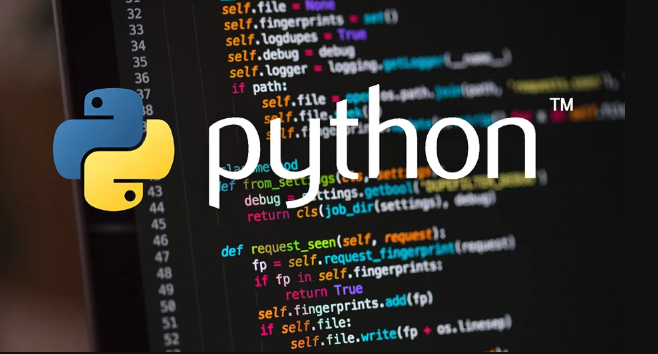
- 文章 · python教程 | 29分钟前 |
- PythonPygal图表制作教程
- 181浏览 收藏
-
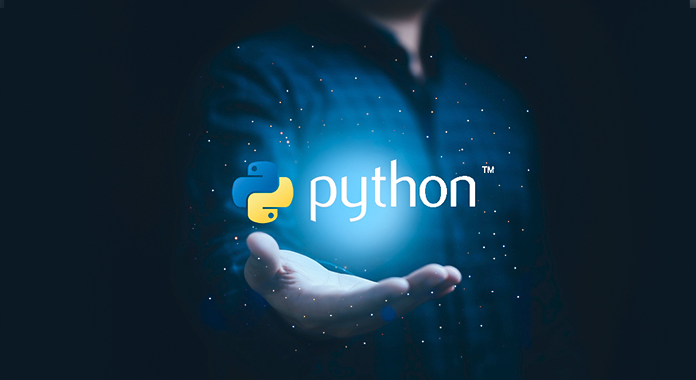
- 文章 · python教程 | 35分钟前 |
- Web开发批量处理文件技巧教程
- 452浏览 收藏
-

- 文章 · python教程 | 1小时前 |
- Python列表与数组怎么搭配使用
- 495浏览 收藏
-

- 文章 · python教程 | 1小时前 | Python class
- Python类怎么定义和使用?
- 434浏览 收藏
-
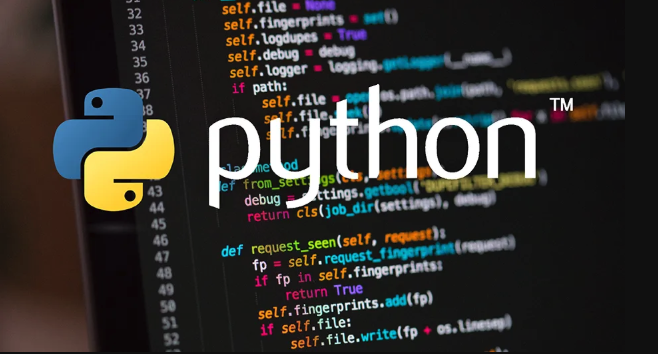
- 文章 · python教程 | 1小时前 | 编程语言 比较操作
- Python常用比较操作符有哪些?
- 131浏览 收藏
-
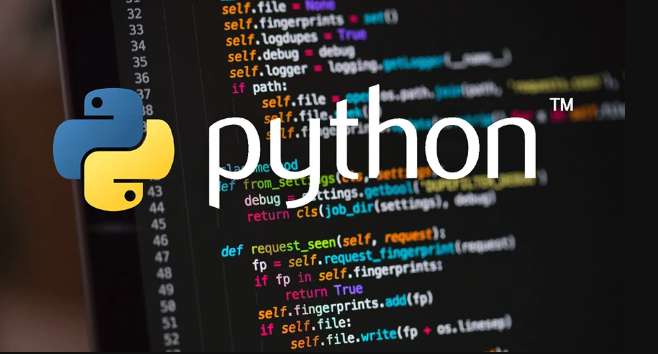
- 文章 · python教程 | 2小时前 |
- Django构建复杂Web系统核心要点
- 231浏览 收藏
-
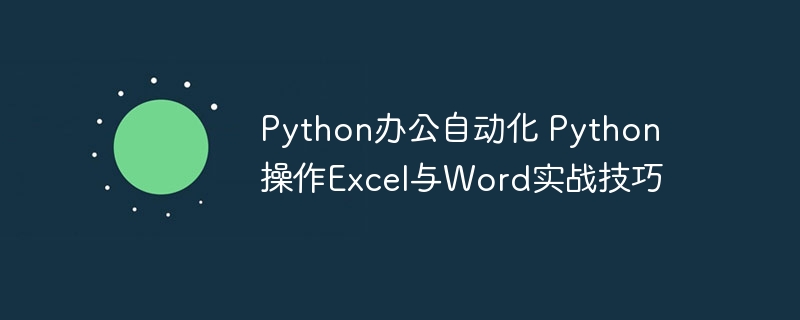
- 文章 · python教程 | 2小时前 |
- Python办公自动化:Excel与Word实用技巧
- 419浏览 收藏
-
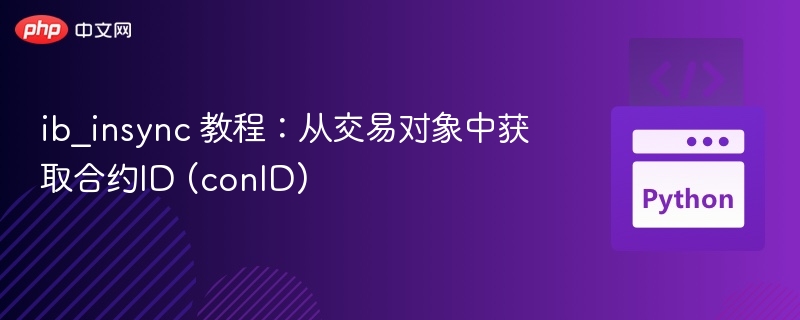
- 文章 · python教程 | 3小时前 |
- ib_insync获取合约ID方法详解
- 257浏览 收藏
-
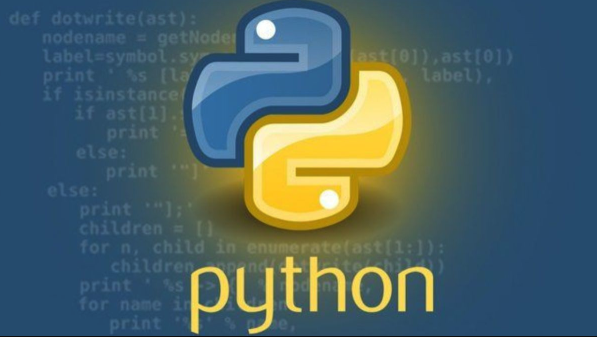
- 文章 · python教程 | 3小时前 |
- Python图像增强方法全解析
- 262浏览 收藏
-
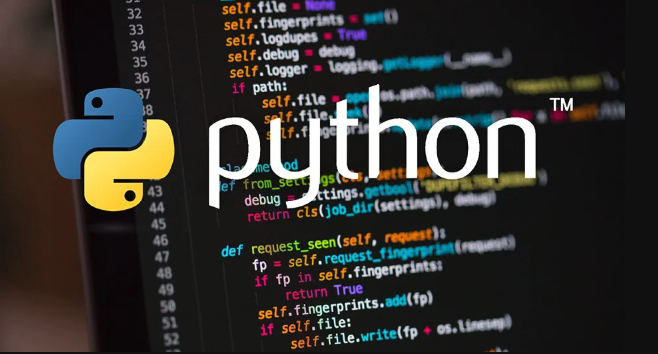
- 文章 · python教程 | 3小时前 |
- 自然语言处理异常检测教程
- 485浏览 收藏
-
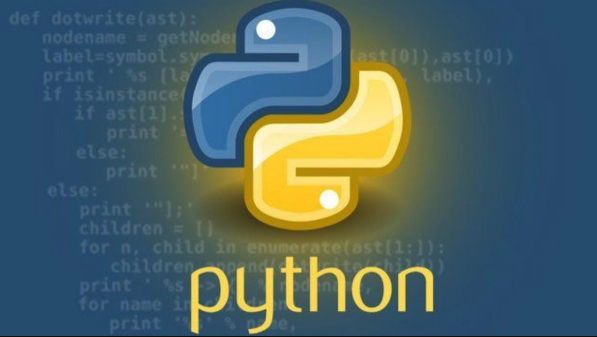
- 文章 · python教程 | 4小时前 |
- Python模块参数传递方法详解
- 425浏览 收藏
-

- 前端进阶之JavaScript设计模式
- 设计模式是开发人员在软件开发过程中面临一般问题时的解决方案,代表了最佳的实践。本课程的主打内容包括JS常见设计模式以及具体应用场景,打造一站式知识长龙服务,适合有JS基础的同学学习。
- 543次学习
-

- GO语言核心编程课程
- 本课程采用真实案例,全面具体可落地,从理论到实践,一步一步将GO核心编程技术、编程思想、底层实现融会贯通,使学习者贴近时代脉搏,做IT互联网时代的弄潮儿。
- 516次学习
-

- 简单聊聊mysql8与网络通信
- 如有问题加微信:Le-studyg;在课程中,我们将首先介绍MySQL8的新特性,包括性能优化、安全增强、新数据类型等,帮助学生快速熟悉MySQL8的最新功能。接着,我们将深入解析MySQL的网络通信机制,包括协议、连接管理、数据传输等,让
- 500次学习
-

- JavaScript正则表达式基础与实战
- 在任何一门编程语言中,正则表达式,都是一项重要的知识,它提供了高效的字符串匹配与捕获机制,可以极大的简化程序设计。
- 487次学习
-

- 从零制作响应式网站—Grid布局
- 本系列教程将展示从零制作一个假想的网络科技公司官网,分为导航,轮播,关于我们,成功案例,服务流程,团队介绍,数据部分,公司动态,底部信息等内容区块。网站整体采用CSSGrid布局,支持响应式,有流畅过渡和展现动画。
- 485次学习
-

- ChatExcel酷表
- ChatExcel酷表是由北京大学团队打造的Excel聊天机器人,用自然语言操控表格,简化数据处理,告别繁琐操作,提升工作效率!适用于学生、上班族及政府人员。
- 3351次使用
-

- Any绘本
- 探索Any绘本(anypicturebook.com/zh),一款开源免费的AI绘本创作工具,基于Google Gemini与Flux AI模型,让您轻松创作个性化绘本。适用于家庭、教育、创作等多种场景,零门槛,高自由度,技术透明,本地可控。
- 3563次使用
-

- 可赞AI
- 可赞AI,AI驱动的办公可视化智能工具,助您轻松实现文本与可视化元素高效转化。无论是智能文档生成、多格式文本解析,还是一键生成专业图表、脑图、知识卡片,可赞AI都能让信息处理更清晰高效。覆盖数据汇报、会议纪要、内容营销等全场景,大幅提升办公效率,降低专业门槛,是您提升工作效率的得力助手。
- 3593次使用
-

- 星月写作
- 星月写作是国内首款聚焦中文网络小说创作的AI辅助工具,解决网文作者从构思到变现的全流程痛点。AI扫榜、专属模板、全链路适配,助力新人快速上手,资深作者效率倍增。
- 4717次使用
-

- MagicLight
- MagicLight.ai是全球首款叙事驱动型AI动画视频创作平台,专注于解决从故事想法到完整动画的全流程痛点。它通过自研AI模型,保障角色、风格、场景高度一致性,让零动画经验者也能高效产出专业级叙事内容。广泛适用于独立创作者、动画工作室、教育机构及企业营销,助您轻松实现创意落地与商业化。
- 3967次使用
-
- Flask框架安装技巧:让你的开发更高效
- 2024-01-03 501浏览
-
- Django框架中的并发处理技巧
- 2024-01-22 501浏览
-
- 提升Python包下载速度的方法——正确配置pip的国内源
- 2024-01-17 501浏览
-
- Python与C++:哪个编程语言更适合初学者?
- 2024-03-25 501浏览
-
- 品牌建设技巧
- 2024-04-06 501浏览

